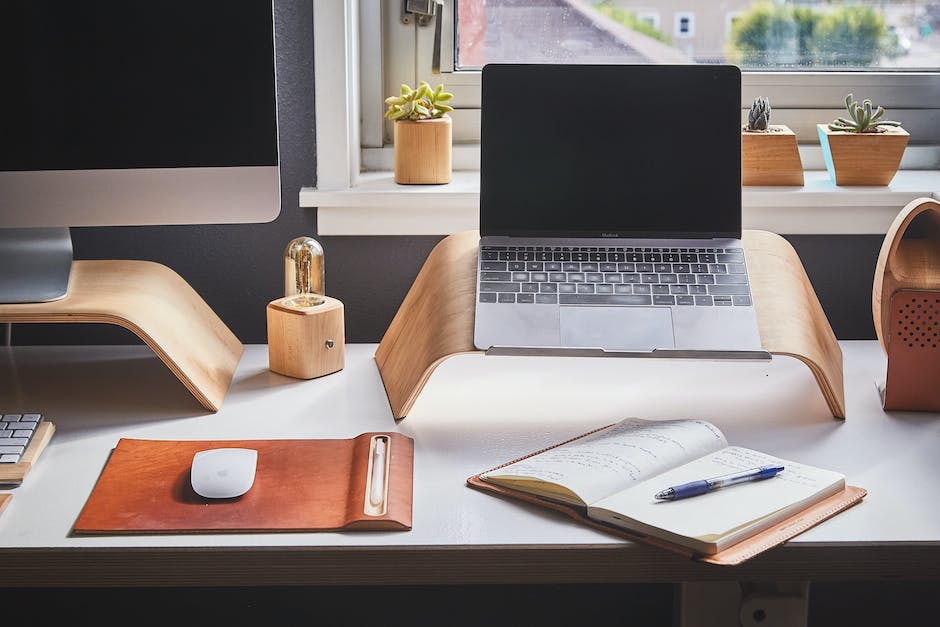With the rise of remote work and home-based entrepreneurs, having a productive home office is more important than ever. This paper elucidates key factors to consider while setting up a perfect work environment at your home. It commences by examining the selection of the right space for your home office, keeping in mind aspects like natural light, serenity, ergonomics, and workspace. We then revolve around one of the fundamentals, which is understanding the concept of ergonomic office furniture to keep you healthy and productive. Finally, we delve into valuable insights about organizing your home office and highlight the importance of a clean and orderly environment to boost concentration and proficiency.
Table of Contents
Choosing the Right Space for Your Home Office
Choosing the Perfect Home Office Location: Key Considerations
In the innovative landscape of today’s business world, having a home office isn’t just a luxury – it’s often a must-have. The advent of advanced technology and the rise of remote work demand that professionals are equipped with a home setup conducive to productivity. But how do you select an appropriate location for your home office? By considering these pivotal factors.
Space and Functionality
Identifying a space that fits your professional needs tops the list. Whether you’re a high-profile CEO or a breakout tech entrepreneur, the nature of your work intricately affects the type of space required. Understand what size and structural attributes match the business actions you’ll primarily engage in.
Lighting
Lighting can impact mood, concentration, and thus, productivity levels. Aim for a location with plenty of natural light. Place the office near a window if possible. If that’s not an option, invest in quality artificial lighting that mimics the natural spectrum of light. Remember, a well-lit workspace can greatly enhance your performance.
Quiet Environment
Noise wreaks havoc on productivity. Selecting a space far from high-traffic areas of your home reduces disturbances during those crucial hours of focus. The quieter the environment, the better you can concentrate on scaling your enterprise and innovating groundbreaking solutions.
Technology Needs
Ensure your office location has strong Wi-Fi connectivity and is in proximity to electrical outlets. You might be orchestrating a multi-million dollar deal or pioneering a disruptive product; technology must serve as your ally, not a hindrance.
Organization Access
Successful entrepreneurs understand the power of an organized workspace. Choose a location allowing for strategic arrangements of desks, files, and supplies. A clutter-free, well-organized space is a fertile ground for generating groundbreaking market solutions.
Easy Accessibility
Your office should ideally be in an area that offers privacy but is also easily accessible. Some business calls might need to be taken outside of “normal” hours or you might be inspired in the middle of the night. In such cases, easy access to your workspace becomes very beneficial.
In conclusion, the principles behind choosing a home office location apply regardless of your industry or the nature of your work. The space should inspire and energize you to challenge the status quo, innovate, and navigate the thrilling paths of your entrepreneurial journey. Whether you’re charting stock trends or creating the next big thing in software, remember – the right home office location will work for you, not against you. With a conducive workspace, there’s no limit to your business success.
Ergonomic Office Furniture
The significance of ergonomics in the selection of office furniture can’t be overstated. It plays an involving role in the sustainability of a conducive work environment. Crafting an office area that champions productivity and performance centers around instilling ergonomic principles. But why is this so important and how do we go about picking the right furnishings?
Why Ergonomics Matters
Think of ergonomics as the science of comfort in the workspace – matching the capabilities of the worker to the demands of their job. It is about custom-fitting the environment to meet individual needs which significantly reduces the risk of strain injuries, boosts overall productivity, promotes better posture and reduces fatigue.
Physical discomfort while working isn’t just bothersome; it’s a silent productivity killer. Symptoms such as backache, carpal tunnel syndrome, eye strain, and neck pain can cause distractions and loss of concentration. Moreover, poor ergonomics have long-term effects on your wellness resulting in musculoskeletal disorders that can lead to frequent doctor visits and days away from work. Consciously integrating ergonomics into your office setup can make all the difference in fostering the overall health and well-being of your staff.
Choosing the Right Office Furniture
Brainstorming on the style, functionality, or type of office furniture to fit into your office space can be quite the task. Here’s how to shore up that process:
- Assess Needs: Every office setup has unique needs. Understand the roles of your staff and determine what kind of furniture will facilitate their work. For instance, IT workers who spend long hours at their desks may need adjustable chairs and desks, while a graphic designer might opt for ample desk space for equipment.
- Consider Adjustability: With the diversity of body sizes and shapes, adjustability becomes critical in achieving a comfortable working environment. Look for chairs with adjustable armrests, backs, and heights. An adjustable desk that can change elevation for sitting or standing work may also be a wise investment.
- Check for Support: Chairs with exceptional lumbar support can help prevent back problems. Go for furniture that supports the natural curve of the spine. Considering a sit-stand desk arrangement also supports the natural body movement and allows workers to switch between sitting and standing.
- Involve Employees: As much as choosing the right furniture matters, incorporating input from those who will be using the furniture daily is valuable. They are best placed to provide insights on what adjustments or improvements can contribute to their comfort and productivity.
- Invest in Quality: Make sure to give precedence to quality over cost. It might be tempting to go for cheaper options, but the vital role that office furniture plays in efficiency, productivity, and health cannot be emphasized enough.
While ergonomics might seem like a small detail, remember that the devil’s in the details. A significant part of any business’s success is the comfort and productivity of its employees. By prioritizing ergonomics in your office space, you solidify a strong foundation for thriving in your field. And remember, a keen eye on ergonomics is not just a whim, but a must-have factor in the contemporary office setup.

Organizing the Home Office
Maximizing productivity in your home office goes beyond space-setting and tech integrations. It also encompasses other crucial factors such as ergonomic considerations in office furniture selection and set-up. Ignoring these aspects can breed discomfort and lead to decreased productivity in the long run.
Ergonomics, the science of designing the workplace environment to fit the user, plays an indispensable role in fashioning a productive work environment. One primary focus of ergonomics is working without physical strain or discomfort. For instance, sitting in an ill-designed chair for an extended period of time often results in physical discomfort which distracts and hampers productivity.
On the other hand, providing supportive office furniture can amplify productivity and even improve health. That’s why prioritizing ergonomics in your home office is a business-savvy move. When planning to enhance your home office, consider the effectiveness of your chair. Does it provide the support to prevent back problems? Or does it leave you shifting uncomfortably throughout the day? An inadequate chair can lead to long-term wellness and musculoskeletal disorders – a clear detriment to productivity.
Investing in quality, adjustable office furniture is always a sound decision. It not only exhibits a clear understanding of ergonomics but also brings a myriad of benefits. From promoting physical ease and comfort, it can heighten productivity and ensure optimal performance.
An adjustable chair, for example, aims to adapt to an individual’s unique body shape, allowing for more comfortable seating. This level of customizability becomes a productivity booster when you consider the hours spent sitting in your home office.
Organizations worldwide are seeing the impact of the value of ergonomics on their team’s productivity. Involving employees or consulting professionals in decision-making processes related to ergonomic upgrades considerably boosts the overall work satisfaction and productivity levels.
In conclusion, if you’re aiming to reach the pinnacle of productivity in your home office, integrating ergonomics into furniture and set-up choices should ride high on your priority list. It’s not just a mere arrangement of furniture; it’s an intentional investment in your most valuable asset – you.

Remember that a tranquil and organized home office is not just about aesthetics but indeed reflects one’s productivity and professionalism. Thoughtfully chosen ergonomic furniture is a significant investment in your long-term health and well-being. Proper organization strategies, effective storage solutions, and maintaining a clutter-free environment significantly contribute to a stress-free, efficient, and productive workspace. May these guidelines serve as your starting point towards creating a home office designed not just for work, but for your overall wellbeing.

Matt Smith is a seasoned journalist and author whose expertise spans across the dynamic realms of Politics, Gadgets, Gaming, and a plethora of general interest topics. With a Master’s in Political science and tech pedigree shaped in Silicon Valley, Matt brings a wealth of knowledge and a critical eye to everything he writes.
Politics: Matt offers sharp political commentary, drawing from his experience as a political analyst and his academic rigor.
Gadgets: His tech insights are grounded in real-world experience, having been on the front lines of innovation with a degree from Caltech.
Gaming: A respected voice in gaming, Matt’s reviews and trend analyses are a testament to his deep involvement in the gaming community.
General Topics: From science to culture, Matt’s writing spans a broad spectrum, engaging readers with a blend of expertise and relatable prose.
Engage with Matt’s compelling content for a fresh perspective on the issues at the forefront of today’s discourse.

